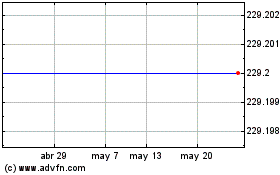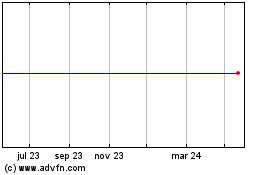Roche’s Phase III STARGLO study demonstrates Columvi significantly
extends survival in people with relapsed or refractory diffuse
large B-cell lymphoma
- The study met its primary endpoint of overall survival
with a 41% reduction in the risk of death in people with relapsed
or refractory (R/R) diffuse large B-cell lymphoma (DLBCL) treated
with Columvi plus
chemotherapy1
- This Columvi combination could provide a much-needed
off-the-shelf treatment option for people with
transplant-ineligible R/R DLBCL
- Data were featured in the congress Press Briefing and
presented today in the Plenary Abstracts Session at EHA 2024 as a
late-breaking oral presentation
Basel, 15 June 2024 - Roche (SIX: RO, ROG; OTCQX: RHHBY)
announced today statistically significant and clinically meaningful
results from its Phase III STARGLO study of Columvi® (glofitamab)
in combination with gemcitabine and oxaliplatin (GemOx) versus
MabThera®/Rituxan® (rituximab) in combination with GemOx (R-GemOx)
for people with relapsed or refractory (R/R) diffuse large B-cell
lymphoma (DLBCL) who have received at least one prior line of
therapy and are not candidates for autologous stem cell transplant,
or who have received two or more prior lines of
therapy.1 Data were featured in the congress Press
Briefing and presented today in the Plenary Abstracts Session at
the European Hematology Association (EHA) 2024 Congress as a
late-breaking oral presentation.1
"The results from STARGLO are the first to show the potential of
a CD20xCD3 bispecific antibody to make a difference in second or
later-line DLBCL in people who are ineligible for transplant and
have limited options," said Jeremy Abramson, M.D., Director, Jon
and Jo Ann Hagler Center for Lymphoma at the Massachusetts General
Hospital Cancer Center, and principal investigator of the STARGLO
study. "Glofitamab in combination with GemOx showed clinically
significant improvement in overall survival, as well as key
secondary endpoints, and the benefits were reinforced with an
additional 11 months of follow-up.”
The primary analysis (median follow-up of 11.3 months) confirmed
that the study met its primary endpoint of overall survival (OS),
demonstrating that patients treated with Columvi plus GemOx lived
significantly longer, with a 41% reduction in the risk of death
(hazard ratio [HR]=0.59, 95% CI: 0.40-0.89, p=0.011) versus
R-GemOx.1 Median OS was not reached with the Columvi
regimen versus nine months for R-GemOx.1 Safety of the
combination appeared consistent with the known safety profiles of
the individual medicines.
Pre-specified exploratory subgroup analyses showed comparable
results, including consistency across the clinically relevant
stratification factors of line of therapy (second-line versus
third-line+) and outcome of last therapy (relapsed versus
refractory). Regional inconsistencies were observed, however
interpretation is limited given the exploratory nature of these
analyses and small subgroups with wide confidence intervals.
“This marks a first step in advancing Columvi combinations
in earlier settings to address the urgent need for the 40% of
people who will relapse or have refractory disease and who have
limited options,” said Levi Garraway, M.D., Ph.D., Roche’s Chief
Medical Officer and Head of Global Product Development. “Moreover,
patients do not have to wait to start treatment with Columvi. This
could be particularly important for patients with highly aggressive
disease who are at risk of rapid disease progression.”
The Columvi combination also met its key secondary endpoints,
with a 63% reduction in risk of disease worsening or death
(progression-free survival, PFS) compared to R-GemOx (HR=0.37; 95%
CI: 0.25–0.55, p<0.0001).1 A follow-up analysis was
conducted after all patients had completed therapy (median
follow-up of 20.7 months), which showed continued benefit in both
primary and secondary endpoints.1 Median OS for people
treated with the Columvi combination was 25.5 months, nearly double
what was seen for people treated with R-GemOx at 12.9 months, and
more than twice as many patients experienced a complete response
(58.5% versus 25.3%, respectively).1
Adverse event (AE) rates were higher with the Columvi
combination versus R-GemOx, noting higher median number of cycles
received with Columvi combination (11 versus 4). One of the most
common AEs was cytokine release syndrome, which was generally low
grade (Any Grade: 44.2%, Grade 1: 31.4%, Grade 2: 10.5%, Grade 3:
2.3%) and occurred primarily in Cycle 1.1
Columvi is the first CD20xCD3 bispecific antibody to demonstrate
a survival benefit in DLBCL in a randomised Phase III trial,
demonstrating the potential of this type of therapeutic combination
to improve survival outcomes in earlier lines of treatment. The
standard second-line therapy for R/R DLBCL patients has
historically been high-dose chemotherapy followed by stem-cell
transplant, however, not everyone with R/R DLBCL is a candidate due
to age or coexisting medical conditions. Newer therapies are also
becoming available, but barriers remain for many, and alternative
treatment options are needed for these patients. Columvi is given
as a fixed-duration treatment, offering people with R/R DLBCL a
treatment end date and the possibility of a treatment-free period,
unlike continuous treatments.
Results from the STARGLO study will be submitted to global
health authorities, including the U.S. Food and Drug Administration
(FDA) and the European Medicines Agency.
Columvi is also being investigated in other aggressive,
hard-to-treat lymphomas and was recently granted Breakthrough
Therapy Designation by the FDA for the treatment of adult patients
with relapsed or refractory mantle cell lymphoma who have received
at least two prior therapies based on results from the Phase I/II
NP30179 study.
About the STARGLO study
The STARGLO study
[GO41944; NCT04408638] is a Phase III, multicentre, open-label,
randomised study evaluating the efficacy and safety of Columvi®
(glofitamab) in combination with gemcitabine plus oxaliplatin
(GemOx) versus MabThera®/Rituxan® (rituximab) in combination with
GemOx in patients with relapsed or refractory diffuse large B-cell
lymphoma who have received at least one prior line of therapy and
who are not candidates for autologous stem cell transplant, or who
have received two or more prior lines of therapy.2
Outcome measures include overall survival (primary endpoint),
progression-free survival, complete response rate, objective
response rate, duration of objective response (secondary
endpoints), and safety and tolerability.2
STARGLO is intended as a confirmatory study to convert Columvi’s
accelerated approval in the US and conditional marketing
authorisation in the EU to full approvals for people with R/R DLBCL
after two or more lines of systemic therapy based on the pivotal
Phase I/II NP30179 study.
About Columvi® (glofitamab)
Columvi is
a CD20xCD3 T-cell engaging bispecific antibody designed to target
CD3 on the surface of T-cells and CD20 on the surface of B-cells.
Columvi was designed with a novel 2:1 structural format. This
T-cell engaging bispecific antibody is engineered to have one
region that binds to CD3, a protein on T-cells, a type of immune
cell, and two regions that bind to CD20, a protein on B-cells,
which can be healthy or malignant. This dual-targeting brings the
T-cell in close proximity to the B-cell, activating the release of
cancer cell-killing proteins from the T-cell. Columvi is part of
Roche’s broad and industry-leading CD20xCD3 T-cell-engaging
bispecific antibody clinical development programme that also
includes Lunsumio® (mosunetuzumab), which aims to provide tailored
treatment options that suit the diverse needs, preferences, and
experiences of people with blood cancers and healthcare systems.
Roche is investigating Columvi as a monotherapy and in combination
with other medicines for the treatment of diffuse large B-cell
lymphoma (DLBCL) and other blood cancers. This includes the Phase
III SKYGLO [NCT06047080] trial investigating Columvi in combination
with Polivy® (polatuzumab vedotin), MabThera®/Rituxan® (rituximab),
cyclophosphamide, doxorubicin and prednisone in previously
untreated DLBCL.
About diffuse large B-cell lymphoma (DLBCL)
DLBCL is the most common form of non-Hodgkin lymphoma (NHL),
accounting for about one in three cases of NHL.3 DLBCL
is an aggressive (fast-growing) type of NHL.3 While it
is generally responsive to treatment in the frontline, as many as
40% of people will relapse or have refractory disease, at which
time salvage therapy options are limited and survival is
short.4 Improving treatments earlier in the course of
the disease and providing much needed alternative options could
help to improve long-term outcomes. Approximately 160,000 people
worldwide are diagnosed with DLBCL each year.3,5
About Roche in haematology
Roche has been developing medicines for people with malignant and
non-malignant blood diseases for more than 25 years; our experience
and knowledge in this therapeutic area runs deep. Today, we are
investing more than ever in our effort to bring innovative
treatment options to patients across a wide range of haematologic
diseases. Our approved medicines include MabThera®/Rituxan®
(rituximab), Gazyva®/Gazyvaro® (obinutuzumab), Polivy® (polatuzumab
vedotin), Venclexta®/Venclyxto® (venetoclax) in collaboration with
AbbVie, Hemlibra® (emicizumab), Lunsumio® (mosunetuzumab) and
Columvi® (glofitamab). Our pipeline of investigational haematology
medicines includes T-cell engaging bispecific antibody cevostamab,
targeting both FcRH5 and CD3, Tecentriq® (atezolizumab), and
crovalimab, an anti-C5 antibody engineered to optimise complement
inhibition. Our scientific expertise, combined with the breadth of
our portfolio and pipeline, also provides a unique opportunity to
develop combination regimens that aim to improve the lives of
patients even further.
About Roche
Founded in 1896 in Basel, Switzerland, as one of the first
industrial manufacturers of branded medicines, Roche has grown into
the world’s largest biotechnology company and the global leader in
in-vitro diagnostics. The company pursues scientific excellence to
discover and develop medicines and diagnostics for improving and
saving the lives of people around the world. We are a pioneer in
personalised healthcare and want to further transform how
healthcare is delivered to have an even greater impact. To provide
the best care for each person we partner with many stakeholders and
combine our strengths in Diagnostics and Pharma with data insights
from the clinical practice.
In recognising our endeavour to pursue a long-term perspective
in all we do, Roche has been named one of the most sustainable
companies in the pharmaceuticals industry by the Dow Jones
Sustainability Indices for the fifteenth consecutive year. This
distinction also reflects our efforts to improve access to
healthcare together with local partners in every country we
work.
Genentech, in the United States, is a wholly owned member of the
Roche Group. Roche is the majority shareholder in Chugai
Pharmaceutical, Japan.
For more information, please visit roche.com.
All trademarks used or mentioned in this release are protected
by law.
References
[1] Abramson J, et al. Glofitamab plus Gemcitabine and Oxaliplatin
(Glofit-GemOx) for Relapsed/Refractory (R/R) Diffuse Large B-Cell
Lymphoma (DLBCL): Results of a Global Randomized Phase III trial
(STARGLO). Presented at: EHA Hybrid Congress; 2024 Jun 3-16.
Abstract #LB3438.
[2] ClinicalTrials.gov. A Phase III Study Evaluating Glofitamab in
Combination With Gemcitabine + Oxaliplatin vs Rituximab in
Combination With Gemcitabine + Oxaliplatin in Participants With
Relapsed/Refractory Diffuse Large B-Cell Lymphoma: NCT04408638
[Internet; cited May 2024]. Available from:
https://classic.clinicaltrials.gov/ct2/show/NCT04408638.
[3] UpToDate. Patient education: Diffuse large B cell lymphoma in
adults (Beyond the Basics). [Internet; cited May 2024]. Available
from:
https://www.uptodate.com/contents/diffuse-large-b-cell-lymphoma-in-adults-beyond-the-basics.
[4] Sehn LH, et al. Diffuse Large B-Cell Lymphoma. N Engl J Med.
2021;384(9):842-858.
[5] World Health Organization. Numbers derived from GLOBOCAN 2022.
Non-Hodgkin Lymphoma Factsheet [Internet; cited May 2024].
Available from:
https://gco.iarc.who.int/media/globocan/factsheets/cancers/34-non-hodgkin-lymphoma-fact-sheet.pdf.
Roche Global Media Relations
Phone: +41 61 688 8888 / e-mail: media.relations@roche.com
Hans Trees, PhD
Phone: +41 79 407 72 58
|
Sileia
Urech
Phone: +41 79 935 81 48 |
Nathalie
Altermatt
Phone: +41 79 771 05 25
|
Simon
Goldsborough
Phone: +44 797 32 72 915
|
Karsten
Kleine
Phone: +41 79 461 86 83
|
Nina
Mählitz
Phone: +41 79 327 54 74 |
Kirti
Pandey
Phone: +49 172 6367262
|
Yvette
Petillon
Phone: +41 79 961 92 50 |
Dr.
Rebekka Schnell
Phone: +41 79 205 27 03 |
|
Roche Investor Relations
Dr. Bruno
Eschli
Phone: +41 61 68-75284
e-mail: bruno.eschli@roche.com
|
Dr.
Sabine Borngräber
Phone: +41 61 68-88027
e-mail: sabine.borngraeber@roche.com |
Dr.
Birgit Masjost
Phone: +41 61 68-84814
e-mail: birgit.masjost@roche.com |
|
Investor Relations North America
Loren
Kalm
Phone: +1 650 225 3217
e-mail: kalm.loren@gene.com
|
- 15062024_Columvi_STARGLO EHA 2024_en


Roche (LSE:0QQ6)
Gráfica de Acción Histórica
De May 2024 a Jun 2024

Roche (LSE:0QQ6)
Gráfica de Acción Histórica
De Jun 2023 a Jun 2024
